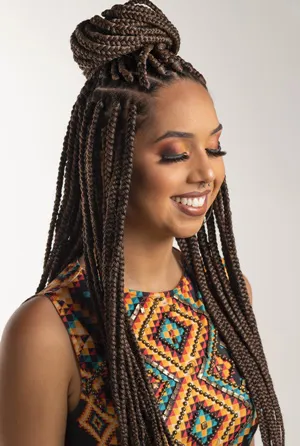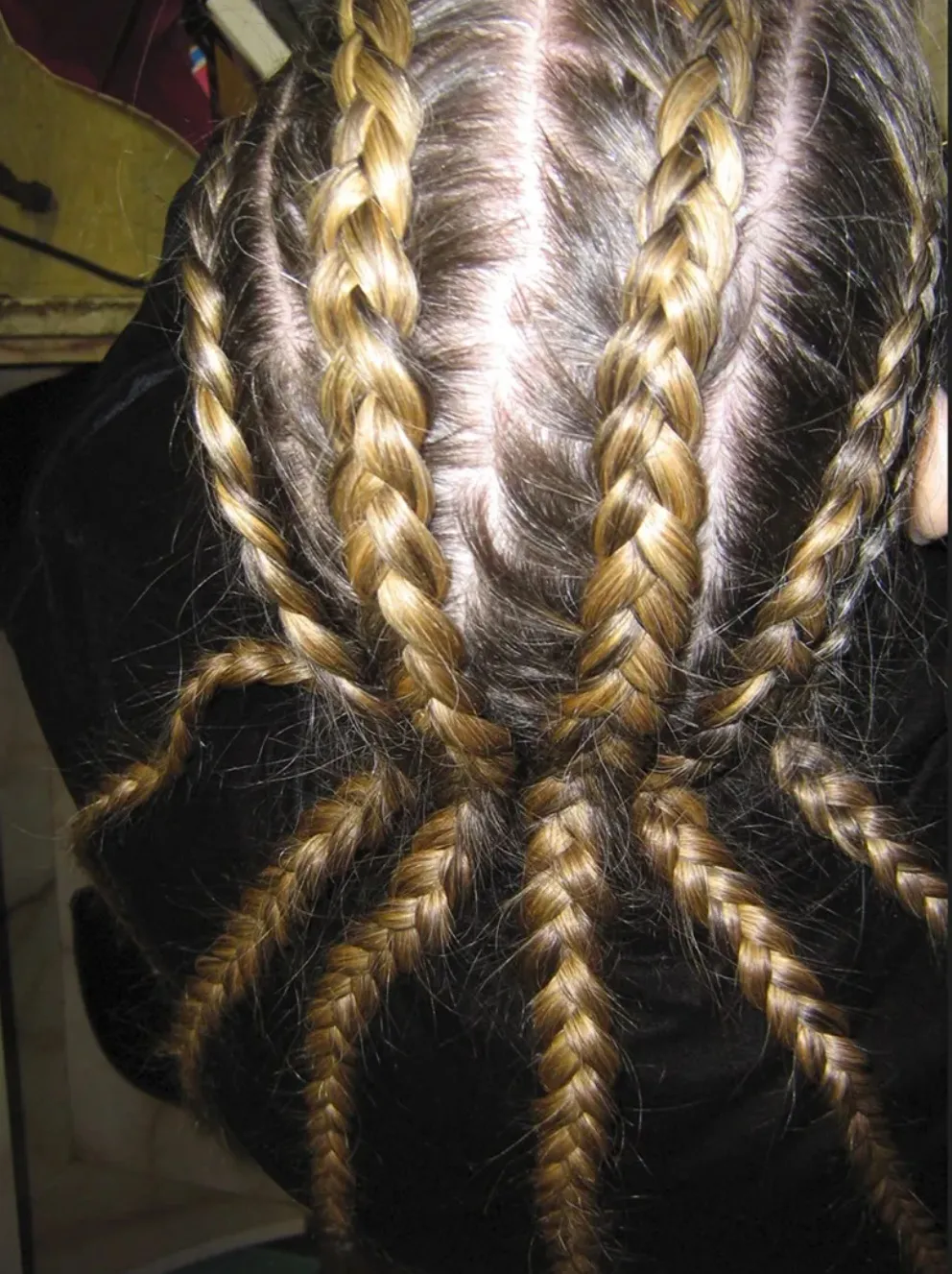
The Kenogen Stage Of Hair Growth And Androgentic Alopecia
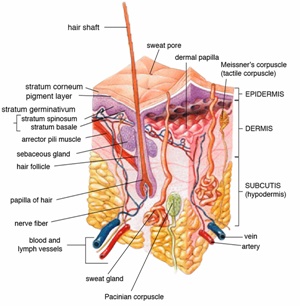
Very few people really know, or even need to know, the hair growth cycles unless they are studying hair loss issues.
Most people who have a good understanding of the human hair growth cycle may mention three or four of the stages.
Many people, even if they know about the four cycles, will not be aware of the kenogen or the empty hair growth phase.
The kenogen cycle is actually the fifth phase in the hair growth cycle. It has a significant impact on people suffering from hair loss.
This is true specifically for males or females with androgenetic alopecia (AGA).
The Traditional Hair Cycle
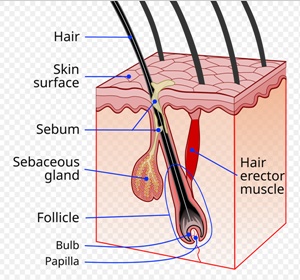 The traditional hair cycle consists of multiple phases:
The traditional hair cycle consists of multiple phases:
- anagen (the growing phase) - 2-10 years
- catagen (hair regression phase from anagen) - 2–3 weeks
- telogen (the resting or maintenance phase. Hair is still firmly anchored) - around 3 months
- exogen (the shedding phase) - 2 to 5 months
- kenogen (the empty phase) - 4 to 7 months
When hair is shed before the initiation of a new manager growth (anagen) phase, the hair follicle may sit completely empty.
This has been identified as the kenogen stage.
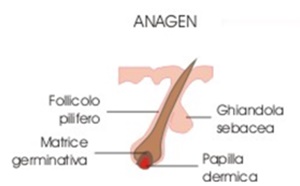 Anagen Hair Growth Cycle
Anagen Hair Growth CycleShortened anagen, lengthened telogen, and increased exogen and kenogen phases can result in long-term hair thinning.
Which is specifically related to androgenetic alopecia which is a progressive hair loss condition.
The number of hair follicles that stall out in the kenogen phase before the anagen or regrowth is increased in men (MPHL) and women (WPHL) with pattern hair loss (PHL).
The Anagen Phase
The anagen phase lasts from 2 to 10 years. It varies by individual.
It's the phase of active growth that determines the ultimate length of the hair before it progresses to the catagen phase.
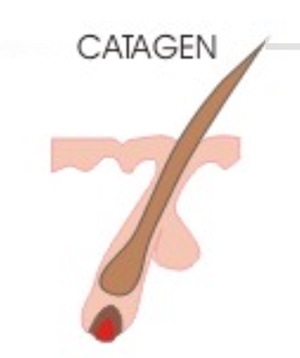 Catagen Hair Growth Phase
Catagen Hair Growth PhaseSome people who grow very long hair may have even longer anagen phases.
While each follicle is in its own stage of the cycle at any given time, most scalp hairs are in the anagen phase
in a normal hair cycle. Unfortunately, not all people have normal hair cycles.Rapid cell division occurs in the hair bulb and dermal papilla. In addition, new hairs begin to protrude from the scalp.
Catagen Phase
After anagen, the hair follicle enters the transitional catagen phase as it regresses from the growth cycle. It shrinks, and then it detaches from the dermal papilla.
Telogen Phase
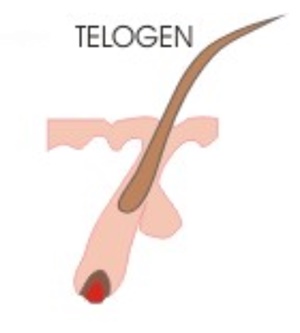 The Telogen Phase Of Hair Growth
The Telogen Phase Of Hair GrowthThe hair then rests in the telogen phase for about 3 months.
It is eventually released and shed as the new hair
continues to grow during the exogen or shedding phase.Kenogen Phase
The kenogen phase indicates the period of the hair cycle in which the hair follicle remains empty after the telogen hair has been pushed out but before a new anagen hair emerges.Kenogen frequency and duration are greater in men and women with androgenetic alopecia (AGA).
Although the kenogen phase is observed in the normal scalp, its duration and frequency are increased in androgenetic alopecia.
Kenogen frequency and duration are greater in men and women with androgenetic alopecia (AGA). Kenogen seems to be related also to the progression of female AGA.
The Kenogen Phase May Hold The Key To Androgenetic Alopecia
During the kenogen phase, the hair follicle physiologically rests.
The duration and frequency of the empty or resting phase are greater in people who have androgenetic alopecia than in other people.
This possibly accounts for baldness.
See: Kenogen. A new phase of the hair cycle?
Teloptosis
In addition to the classical cycle, the hair follicle may follow an alternative route during which the telogen phase, not accompanied by an immediate new early anagen, ends with teloptosis (the termination of the telogen phase), leaving the follicle completely empty. This is the kenogen phase.
See: Teloptosis, a turning point in hair shedding biorhythms.
The higher number and longer duration of kenogen hairs are the main reason for the gradual diminishing in the density of the hair in both men and women with androgenetic alopecia (AGA).
The timing regulation of the hair growth phases is quite complex. The initiation of the next anagen I or growth phase is independent from teloptosis. Both hair phases are triggered by distinct factors.
Scientists believe that teloptosis is the result of the loss of adhesion between cells of the club hair and those of its epithelial envelope.
Teloptosis synchronization is perceived as telogen effluvium. This may or may not be related to the shortening of the anagen phase.
Subtle changes leading to early or delayed teloptosis affect hair density. It is possible to distinguish two types of telogen hairs on a trichogram.
Those with an epithelial sheath indicate strong binding, suggesting early telogen, whereas the absence of an epithelial sheath indicates loose binding, conveying teloptosis.
How Long Does The Kenogen Phase Last?
In balding males, kenogen was observed to last 4–7 months and to affect 80% of all hair cycles.
Expert findings suggest that the old concept of hair miniaturization as the sole possible cause of baldness is hardly tenable.
Vellus Hair
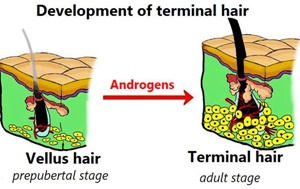 Translation of File:Androgensensibilitaet.JPG, idea by OIEnglish, made by Kubek15 - Wikipedia
Translation of File:Androgensensibilitaet.JPG, idea by OIEnglish, made by Kubek15 - WikipediaThe progressive reduction of the number of terminal hairs and the simultaneous increase in the number of vellus hairs (hair miniaturization) are the current explanation for human baldness.
In a 2.5-year study on 43 male subjects with androgenetic alopecia (AGA), hair loss researchers found that oral finasteride augmented the total number of hairs by 55% but failed to decrease the prevalence of vellus hairs.
This could mean that even though oral finasteride or Propecia can initially slow or halt androgenetic hair loss, over time, hair miniaturization will continue, and vellus or small hair will eventually replace terminal hairs.
Vellus hair is short, thin, light-colored, and barely noticeable hair that develops on most of a human’s body during childhood.
The exceptions include the lips, the back of the ear, the palm of the hand, the sole of the foot, some external genital areas, the navel, and scar tissues.
Definition Of Hair Density
The density of hair – the number of hair follicles per area of skin – varies from person to person. Each strand of vellus hair is usually less than 2 mm (1/13 inch) long, and the follicle is not connected to a sebaceous gland.
Vellus hair is most easily observed in children and adult women, who generally have less terminal hair to obscure it. Vellus hair is not lanugo hair. Lanugo hair is a much thicker type of hair that normally grows only on fetuses.
Vellus hair is differentiated from the more visible terminal or androgenic hair, which develops only during puberty, usually to a greater extent in men than it does in women.
The Latin language uses the word vellus to designate "a fleece" or "wool." Vellus hair is sometimes colloquially referred to as peach fuzz due to its resemblance to the downy epidermic growths on the peach fruit.
Summary - The Kenogen Stage Of Hair Growth And Androgentic Alopecia
Scientists believe they know why.
It appears that with androgenetic alopecia, hairs become progressively softer and wispier; they cannot explain why areas of hair rarefaction develop.
Researchers have proposed that the longer duration and higher frequency of kenogen or empty hairs are the real mechanisms through which the scalp hairs rarefy or miniaturize.
Oral finasteride confirmed its efficacy in increasing the total number of hairs but failed to decrease the prevalence of vellus hairs.
Yes, finasteride may be able to help stall hair loss, but ultimately it may not be able to permanently stop it.
Best wishes to all.Social Media Network Information
Please follow us on Twitter at: https://Twitter.com/HairBoutique. I look forward to meeting new people from all walks of Twitter and learning from their Tweets.




